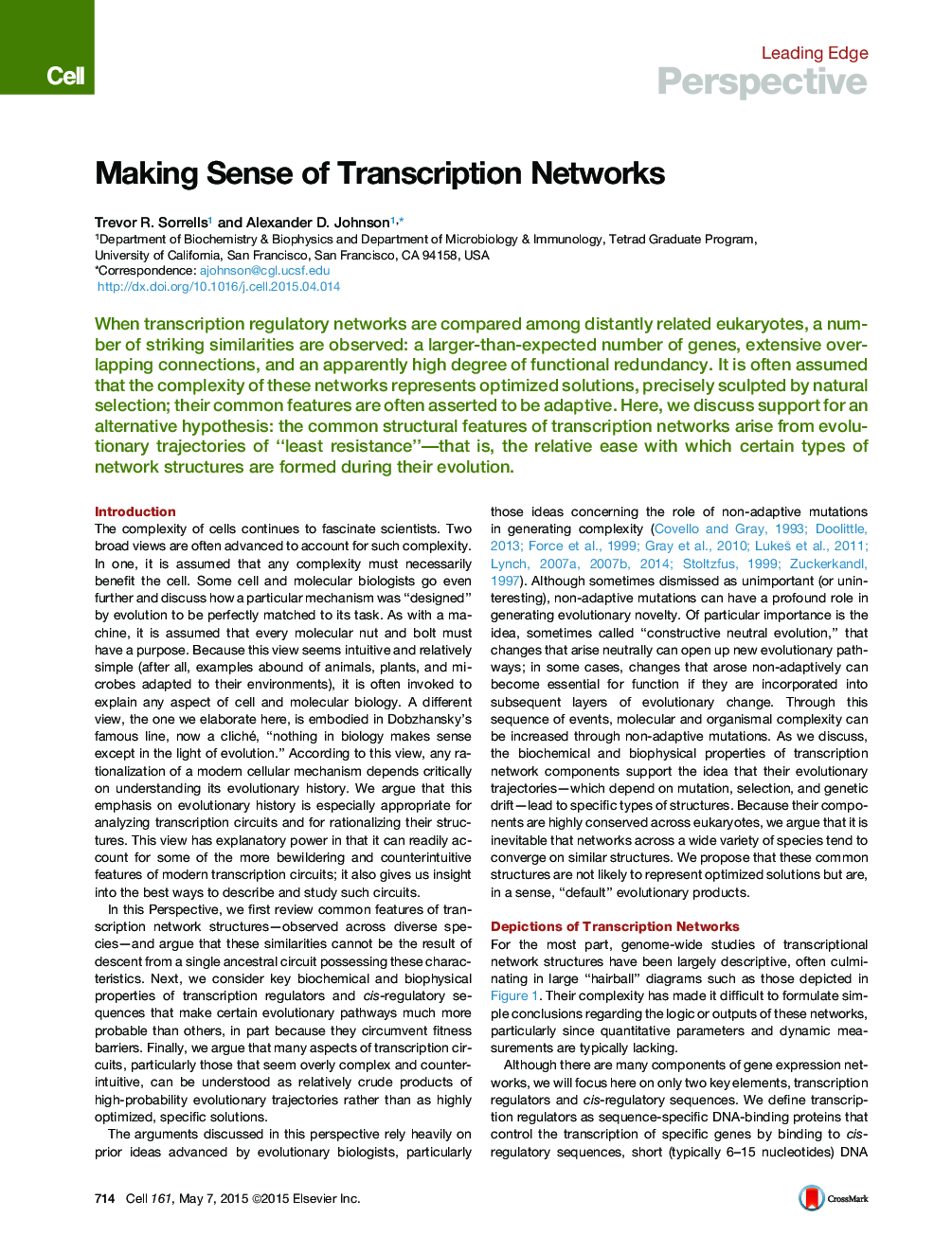| Article ID | Journal | Published Year | Pages | File Type |
|---|---|---|---|---|
| 2035256 | Cell | 2015 | 10 Pages |
Abstract
When transcription regulatory networks are compared among distantly related eukaryotes, a number of striking similarities are observed: a larger-than-expected number of genes, extensive overlapping connections, and an apparently high degree of functional redundancy. It is often assumed that the complexity of these networks represents optimized solutions, precisely sculpted by natural selection; their common features are often asserted to be adaptive. Here, we discuss support for an alternative hypothesis: the common structural features of transcription networks arise from evolutionary trajectories of “least resistance”—that is, the relative ease with which certain types of network structures are formed during their evolution.
Related Topics
Life Sciences
Biochemistry, Genetics and Molecular Biology
Biochemistry, Genetics and Molecular Biology (General)
Authors
Trevor R. Sorrells, Alexander D. Johnson,
